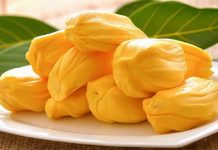Family: Sapindaceae
Synonym: Sapindus rubiginosus Roxb.
Bengali/Vernacular name: Rubiharina.
English name: Rusty sapindus.
Description of the Plant: A shrub or a small tree, up to 16 m tall, branchlets terete, grooved, densely hairy when young. Leaves 3-6 jugate, often with pseudo-terminal leaflets, leaflet elliptic to lanceolate, 6-20 X 4-11 cm, velvety in both sides, rounded to cuneate at the base, acute to acuminate at the apex. Inflorescence 35-40 cm long, densely tomentose. Flowers sweet-scented, white to yellowish. Fruits 1-3 lobed, dark purple to nearly black when ripe; seeds oblong-ellipsoid.
Plant parts Used: Leaf, seed, root.
Traditional
Uses: Fresh juice extracted from the leaves of the plant is given for
the treatment of flatulence.
Pea-sized pills made with the leaves of the plant are advised to take thrice a
day (one pill each time) for two weeks to treat constipation.
Fresh juice extracted from leaves of the plant is given thrice a day (10 ml
amount each time) for three days to treat epilepsy.
Leaves and roots of the plant are used for poulticing.
A paste made with the leaves of the plant is applied to the tumor once a day
until the lipoma (tumor) is cured.
A decoction of roots and leaves is used in the treatment of fever.
Decoction prepared from the seeds of the plant is used in curing whooping
cough.
An extract made with leaves of the plant; hot bath is advised to have once a
day for seven days with that extracts to treat skin disease.
Distribution: This plant is common in all natural forests.
Is this plant misidentified? If yes, please tell us….















Thanks
Good job.